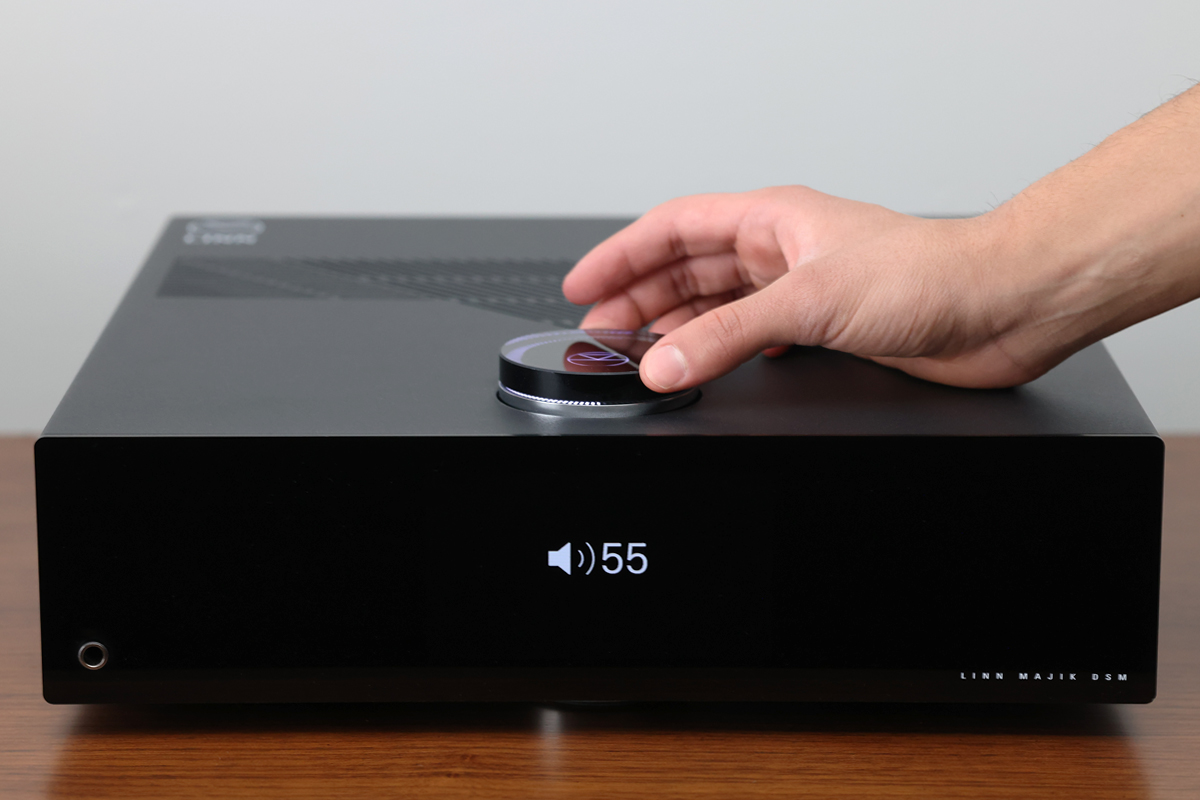
Linn Majik DSM Streaming Integrated Amplifier
- Written by: Roger Kanno
Note: for the full suite of measurements from the SoundStage! Audio-Electronics Lab, click this link.
Linn Products may be best known for its Sondek LP12 turntable, originally introduced in 1972, but the Scottish brand has been manufacturing its DS streaming components since 2007. Linn ceased production of optical disc players back in 2009. Its three Network Music Players (Linn’s terminology for streaming components) are currently the only digital source components that the company offers. The least-expensive model is the Majik DSM, the subject of this review. It includes amplification, so it can be thought of as a streaming integrated amplifier. The two other models, the Klimax DSM and Selekt DSM, require separate power amplification.

The Persistence of Downloads
- Written by: AJ Wykes
Seven years ago, when Gordon Brockhouse asked “Are downloads dead?” on this site, the question felt relevant but premature. Downloads were in obvious decline, streaming was ascendant, and the writing seemed to be on the wall. Today, with streaming accounting for 69% of global music revenues and downloads representing just 2.8% of the market, you’d think the answer would be obvious. Yet download stores are still operating here in 2025, serving a dedicated, passionate audience that has no intention of giving up ownership.

Devialet Phantom Ultimate 98 dB Streaming Active Loudspeaker System
- Written by: AJ Wykes
 I’ve been curious about Devialet’s Phantom line of all-in-one wireless active loudspeakers ever since they first launched in 2015. The French company made bold claims about their technology, their engineering, and their willingness to reimagine what a speaker could be. So when the opportunity arose to review the latest iteration of the Phantom, the Phantom Ultimate, I jumped at it.
I’ve been curious about Devialet’s Phantom line of all-in-one wireless active loudspeakers ever since they first launched in 2015. The French company made bold claims about their technology, their engineering, and their willingness to reimagine what a speaker could be. So when the opportunity arose to review the latest iteration of the Phantom, the Phantom Ultimate, I jumped at it.
Read more: Devialet Phantom Ultimate 98 dB Streaming Active Loudspeaker System

Cord-Cutting: Wireless Surround Sound in 2025
- Written by: AJ Wykes
Not only is the television screen the focal point of many living rooms, but it has increasingly become the central control hub for those spaces. That has shifted how people think about audio in these rooms.

FiiO SP3 BT Active Desktop Speaker System
- Written by: AJ Wykes
FiiO has made quite a name for itself in headphone-audio circles thanks to the quality of its well-priced portable electronics, which include DACs, DAPs, headphone amplifiers, and Bluetooth transmitters and receivers. Recently, the Chinese brand has been expanding its product offerings into other areas, such as headphones, turntables, and active loudspeakers.

MQA Update, October 2025
- Written by: Gordon Brockhouse
It wasn’t exactly a coming-out party, at least not the one I expected. In a January 1 feature on Simplifi, Mike Jbara, vice-president and general manager of Lenbrook Media Group (LMG), said High End 2025 would mark “the coming-out party” for a new streaming service specializing in MQA-encoded music.

Elac Debut ConneX DCB61 Active Loudspeaker System
- Written by: AJ Wykes
German loudspeaker manufacturer Elac has made a number of appearances on this site, with products like the all-analog active Navis ARB‑51 bookshelf and Navis ARF‑51 floorstanding loudspeakers having been featured in reviews here. More recently we featured the Debut ConneX DCB41, the company’s entry-level powered bookshelf speaker system (US$699), designed at Elac Research in Ontario, Canada, and reviewed by Gordon Brockhouse in March 2023.
Read more: Elac Debut ConneX DCB61 Active Loudspeaker System

Spotify Lossless Is Here at Last! Was it Worth the Wait?
- Written by: AJ Wykes
After years of broken promises, Spotify has finally done it. The streaming giant is now rolling out lossless audio to its Premium subscribers, ending one of the most prolonged feature droughts in tech history. Four years after first teasing “Spotify HiFi,” the company that dominates global music streaming is finally delivering serious audio quality to those who demand it.
Read more: Spotify Lossless Is Here at Last! Was it Worth the Wait?

Why Don’t People Get Active?
- Written by: AJ Wykes
I’ve been a strong proponent of active loudspeaker systems since early in my audio journey. As I described in my recent introductory feature, I bought my first set of active studio monitors back in the late 1990s. Before that, I had assembled an audio system piecemeal that incorporated active crossovers—and in the process, I heard the benefits of this approach firsthand.

Eversolo Play Streaming Integrated Amplifier
- Written by: AJ Wykes
Note: for the full suite of measurements from the SoundStage! Audio-Electronics Lab, click this link.
Eversolo is a relatively new name in hi-fi, though it may be familiar to followers of this site thanks to Roger Kanno’s recent review of the DMP‑A8 streaming preamplifier. During its short time on the market, the company has quickly garnered acclaim for products that are well built, feature customizable interfaces, and offer exceptional value.
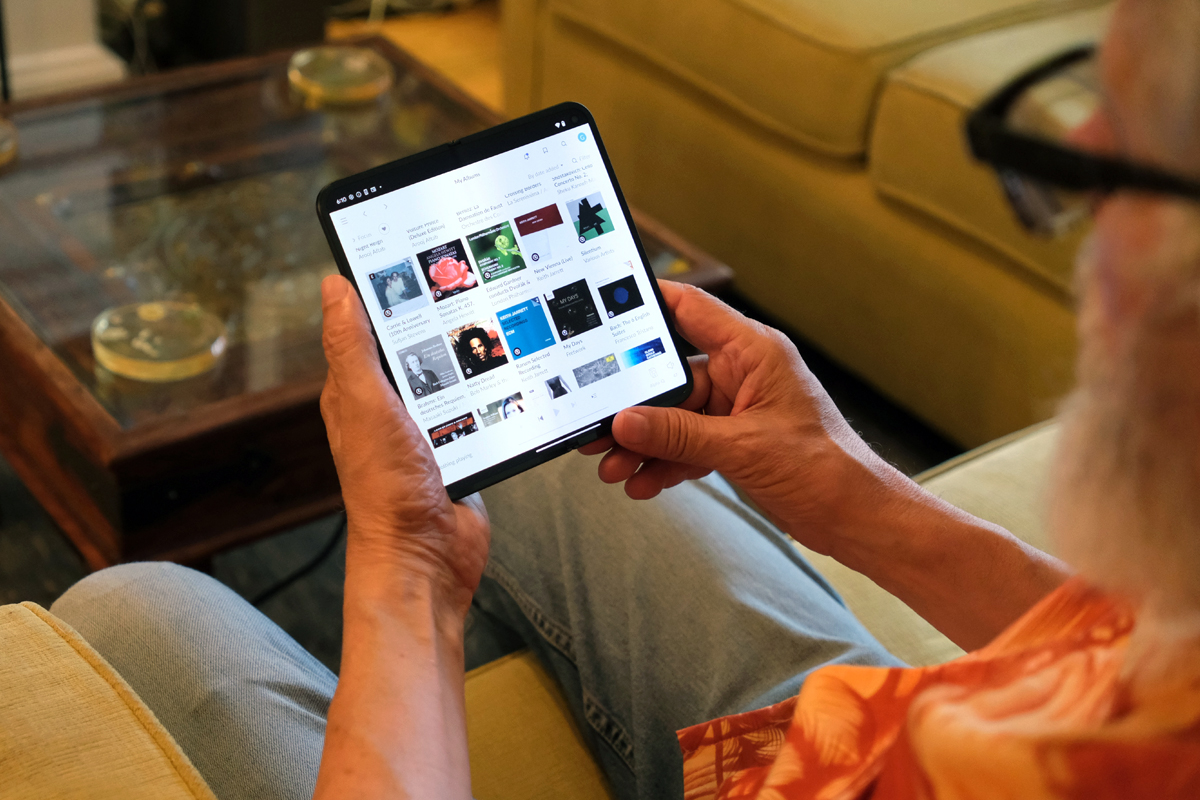
Shape-Shifters—Using Music Apps on Foldable Smartphones
- Written by: Gordon Brockhouse
Like most music lovers these days, I use some kind of computing device for the bulk of my listening. When I’m listening through the KEF LS60 Wireless active speaker system in my living room, I cue up music, control playback, and adjust system settings using a ninth-generation iPad. Upstairs in my home office, I use my MacBook Pro (late 2023, M3) to control playback through the PSB Alpha iQ active speaker system on the top shelf of my secretary desk.
Read more: Shape-Shifters—Using Music Apps on Foldable Smartphones

Direct Connections—Do You Really Need a Music App?
- Written by: Gordon Brockhouse
Ever since I got into file-based playback in the late 2000s, I’ve used some kind of app to play music. At first it was iTunes, the music app bundled with Mac computers. When I started purchasing high-rez albums from download stores like HDtracks, I added BitPerfect, an inexpensive utility that runs on top of iTunes and enables bit-perfect playback of files with different sampling rates and bit depths.
Read more: Direct Connections—Do You Really Need a Music App?
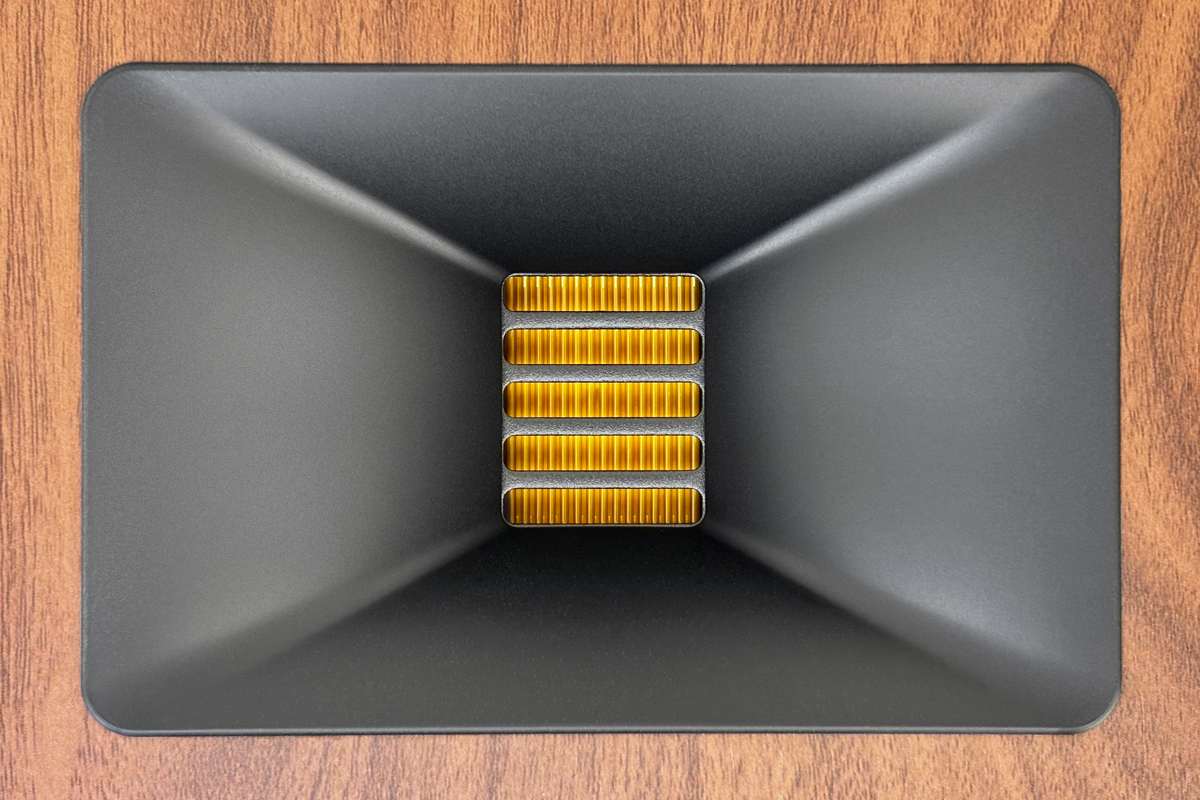
Fluance Ri71 Reference Powered Loudspeaker System
- Written by: AJ Wykes
I must admit that, prior to this review, I had no experience with Fluance’s products. This is surprising, given that Fluance has been in business for over 25 years and is a Canadian company based in Ontario—where I lived for over a decade. Despite my ignorance, Fluance has become a recognized hi-fi brand, thanks to its well-regarded loudspeaker and turntable products.
Read more: Fluance Ri71 Reference Powered Loudspeaker System

The Long Way Round: My Journey to Simplifi
- Written by: AJ Wykes
As this is my first feature article for SoundStage! Simplifi, and my first contribution as senior site editor, I’m going to kick things off with a synopsis of my hi-fi journey to date. This will hopefully break the ice and provide some context about my philosophy when it comes to our audio hobby.

Advance Paris PlayStream A7 Streaming Integrated Amplifier
- Written by: Dennis Burger
As much as I love the quality and convenience of modern connected audio—not to mention the incredible value provided by music services such as Qobuz—I must admit I understand why some audiophiles prefer to stick with their traditional media and more boutique-y gear.
Read more: Advance Paris PlayStream A7 Streaming Integrated Amplifier
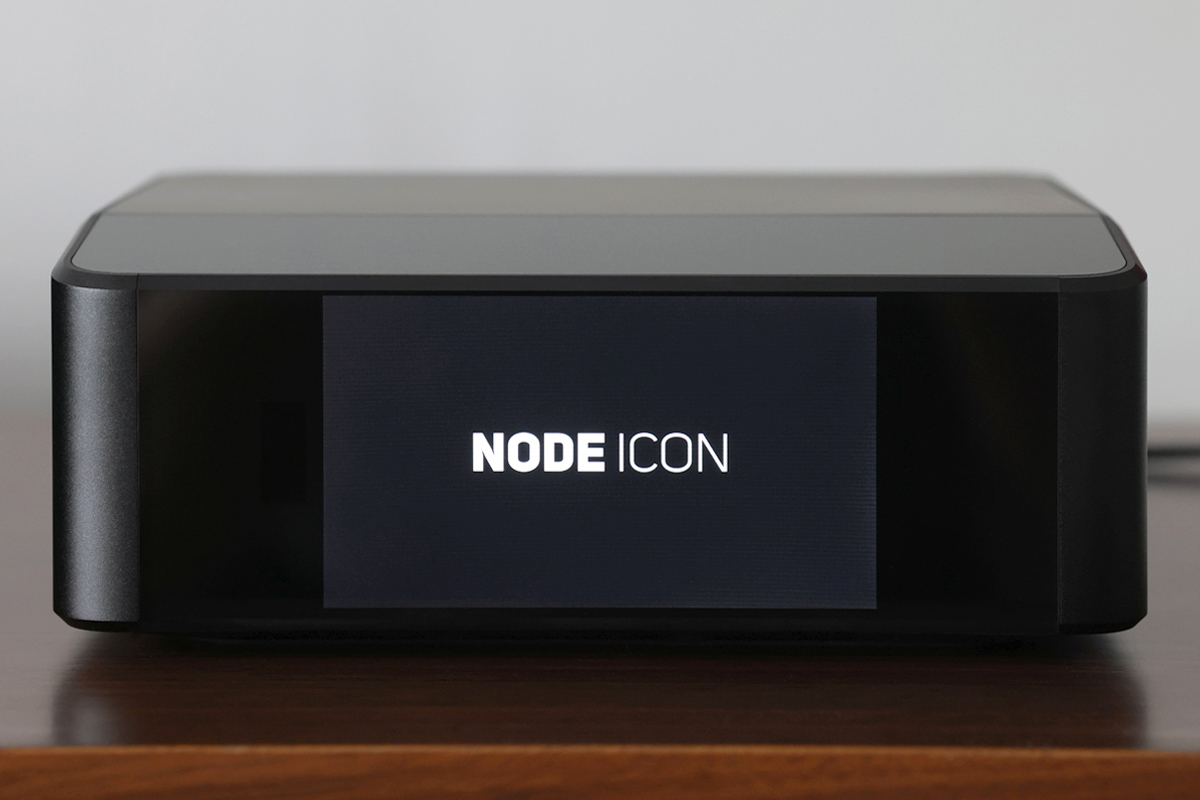
Bluesound Node Icon Streaming Preamplifier
- Written by: Roger Kanno
Note: for the full suite of measurements from the SoundStage! Audio-Electronics Lab, click this link.
 In the past four years, SoundStage! Simplifi has featured reviews of four releases of the Bluesound Node streamer: the 2021 Node streaming DAC-preamplifier (reviewed by Gordon Brockhouse, October 2021), the 2023 Node X streaming DAC-preamplifier (reviewed by me in October 2023), the 2024 Node Nano streamer (reviewed by Todd Whitesel, September 2024), and the 2024 Node streaming preamplifier (reviewed by Gordon Brockhouse, February 2025). In December 2024, Bluesound added another model to its Node line that is a little different from the others: the Node Icon. In this version, the streamer is intended to be a reference component for a high-quality audio system; yet, by high-end standards, it is still priced reasonably at $1199 (all prices USD).
In the past four years, SoundStage! Simplifi has featured reviews of four releases of the Bluesound Node streamer: the 2021 Node streaming DAC-preamplifier (reviewed by Gordon Brockhouse, October 2021), the 2023 Node X streaming DAC-preamplifier (reviewed by me in October 2023), the 2024 Node Nano streamer (reviewed by Todd Whitesel, September 2024), and the 2024 Node streaming preamplifier (reviewed by Gordon Brockhouse, February 2025). In December 2024, Bluesound added another model to its Node line that is a little different from the others: the Node Icon. In this version, the streamer is intended to be a reference component for a high-quality audio system; yet, by high-end standards, it is still priced reasonably at $1199 (all prices USD).

Reading the Room: An Interview with Nilo Casimiro Ericsson of Dirac Research
- Written by: Gordon Brockhouse
It’s been said so often, it’s almost an audiophile cliché: the most important component in any sound system is the room in which it’s used. Like all clichés, this one contains a large measure of truth.
Read more: Reading the Room: An Interview with Nilo Casimiro Ericsson of Dirac Research
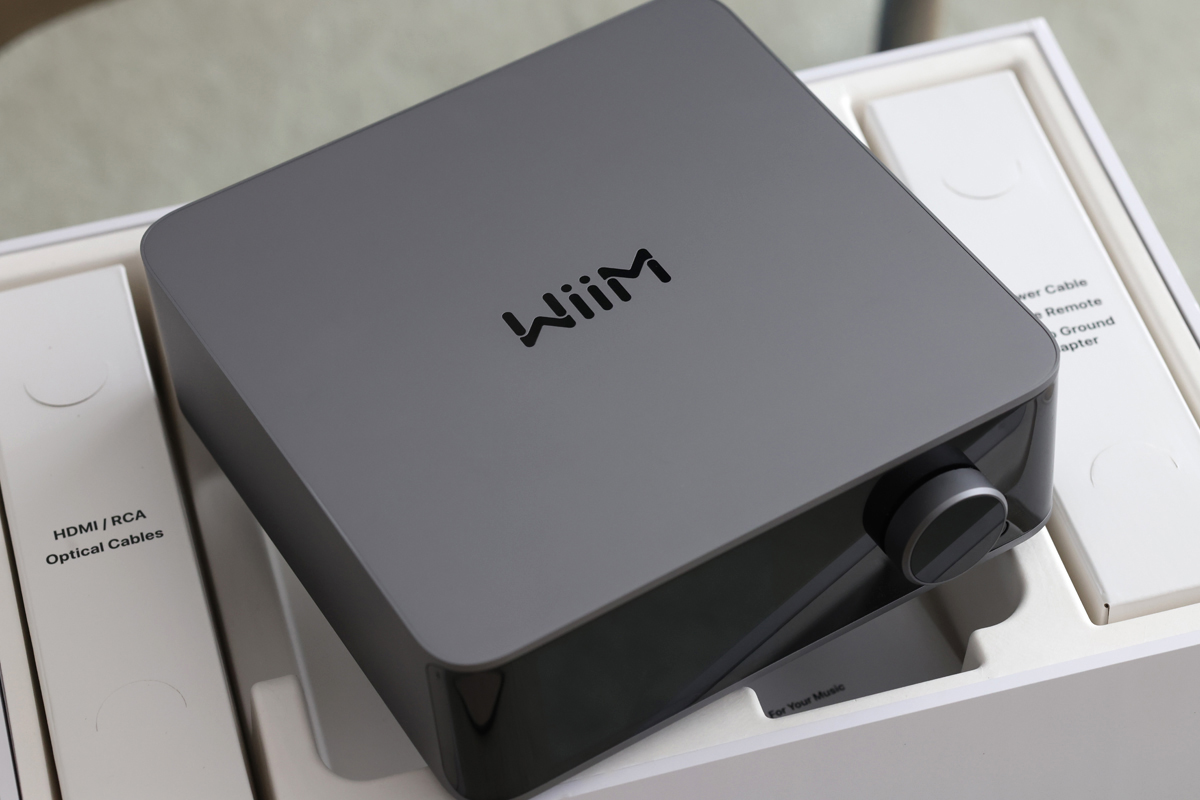
WiiM Ultra Streaming Preamplifier
- Written by: AJ Wykes
Note: for the full suite of measurements from the SoundStage! Audio-Electronics Lab, click this link.
 When SoundStage! managing editor Gordon Brockhouse asked me which products I’d be interested in reviewing for the site, one of my first suggestions was the WiiM Ultra streaming preamplifier. I’d already become familiar with the company’s puck-shaped entry-level Mini streamer, and its more advanced sibling not only fit the bill for the Simplifi remit, but was also receiving high praise from other outlets. Time to get on board!
When SoundStage! managing editor Gordon Brockhouse asked me which products I’d be interested in reviewing for the site, one of my first suggestions was the WiiM Ultra streaming preamplifier. I’d already become familiar with the company’s puck-shaped entry-level Mini streamer, and its more advanced sibling not only fit the bill for the Simplifi remit, but was also receiving high praise from other outlets. Time to get on board!

Help! I Need Somebody!
- Written by: Gordon Brockhouse
Back in 2012, when Canada’s Lenbrook Industries was getting set to launch its Bluesound line of multiroom streaming products, they made a critical hire. Who was that person? A software engineer who could oversee development of the operating system and apps that would underpin the new components? A hardware engineer who could design those components? A marketing director who could create a campaign to drive awareness of the new brand?

JBL Authentics 300 Portable Music System
- Written by: Gordon Brockhouse
It was a few minutes past 5 p.m. on the last day of winter in the northern hemisphere, and I was sitting in an Adirondack chair on my second-floor deck enjoying a crisp sauvignon blanc from the southern hemisphere. I’d been aching for some outdoor lounging ever since the temperatures first started plunging last November. With the daytime high reaching 66°F, this was my chance.

Cambridge Audio EXN100 Streaming Preamplifier
- Written by: Roger Kanno
Cambridge Audio has been in the music-streamer business since the early 2010s, developing their StreamMagic software platform and producing many high-quality streaming components. Along the way, they have become one of the go-to brands for affordable, high-value streaming solutions. Sure, they also offer the relatively expensive Edge NQ network player ($4999, all prices in USD) as part of their reference Edge series, but much of their extensive catalog is geared towards cost-conscious audiophiles.
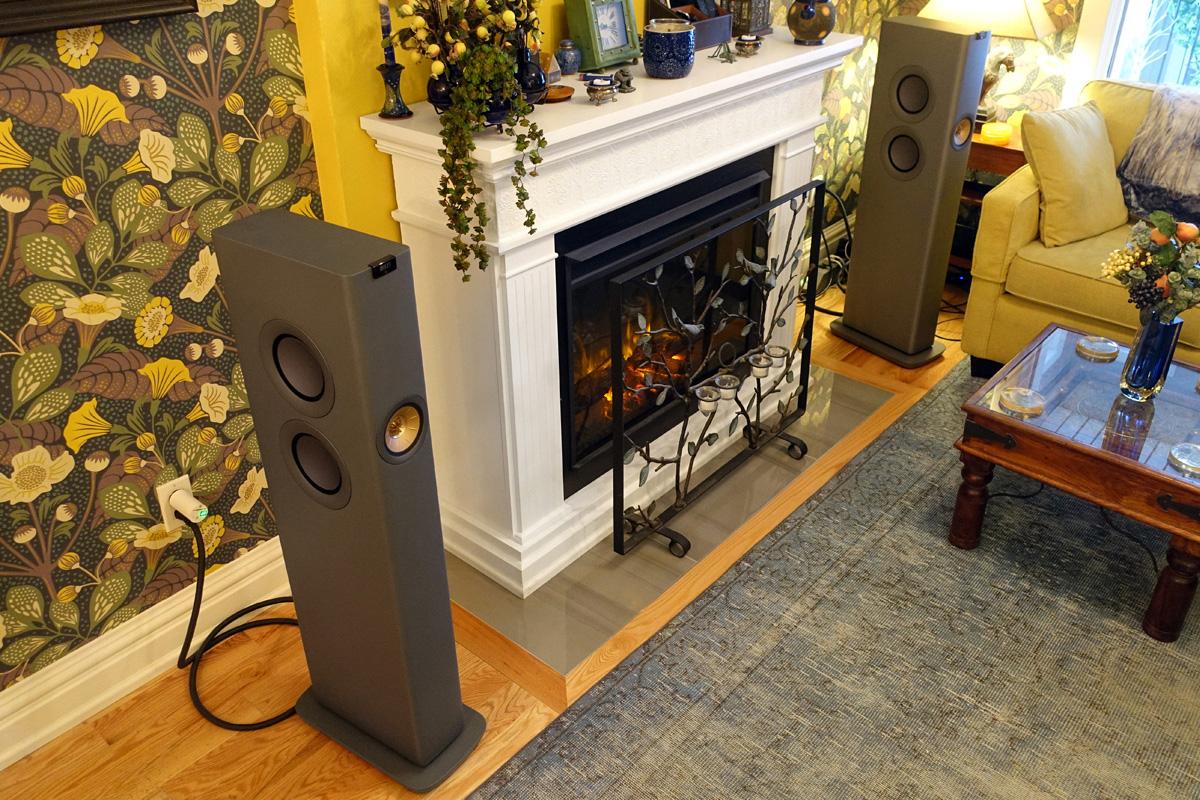
Game Over!
- Written by: Gordon Brockhouse
Am I kidding myself in thinking that I’ve put together an endgame music system? Make that two systems—one in my main-floor living room and another in my second-floor office. Recently, I’ve made some changes to both setups, and I’m delighted with the results. I fully expect both systems to keep thrilling me until I shuffle off this mortal coil or get carted off to a home.

Bluesound Node Streaming Preamplifier (2024)
- Written by: Gordon Brockhouse
 This is the first time I’ve ever kicked off a product review with an apology, but I believe an apology is in order here—for two reasons.
This is the first time I’ve ever kicked off a product review with an apology, but I believe an apology is in order here—for two reasons.
The first is lateness. On August 20, Bluesound announced a new version of its popular Node streaming preamp. Priced at $549 (all prices in USD), the 2024 Node began shipping in late September. Bluesound also announced two brand-new Nodes: the affordable Node Nano ($299), reviewed by Todd Whitesel last September on Simplifi, and the flagship Node Icon ($999).

Roksan Caspian 4G Streaming Integrated Amplifier
- Written by: Roger Kanno
Note: for the full suite of measurements from the SoundStage! Audio-Electronics Lab, click this link.
Last fall, the UK hi-fi brand Roksan updated their premium Caspian integrated amplifier. The first Caspian amplifier appeared in 1998; replacement models followed in 2004 and 2010. Roksan’s new fourth-generation Caspian lineup includes two integrated amplifiers—the Caspian 4G Integrated Amplifier ($3750, all prices in USD) and the subject of this review, the Caspian 4G Streaming Amplifier ($5000). Both models incorporate a host of Roksan’s premium analog and digital circuit designs, but the Caspian 4G Streaming Amplifier adds a network streamer based on the highly respected BluOS streaming platform from Canada’s Lenbrook Industries. Other than BluOS streaming, the two amplifiers are almost identical.

MQA’s Second Chapter
- Written by: Gordon Brockhouse
When Canada’s Lenbrook Industries purchased select assets of MQA Limited in September 2023, audiophiles had lots of questions. One question was, Why? What interest could the owner of three major audio brands—Bluesound, NAD, and PSB—have in an audio format that had been embroiled in controversy for the whole of its existence? Critics of MQA (of which there were many) had even more pointed questions, such as, How is this thing not dead yet?
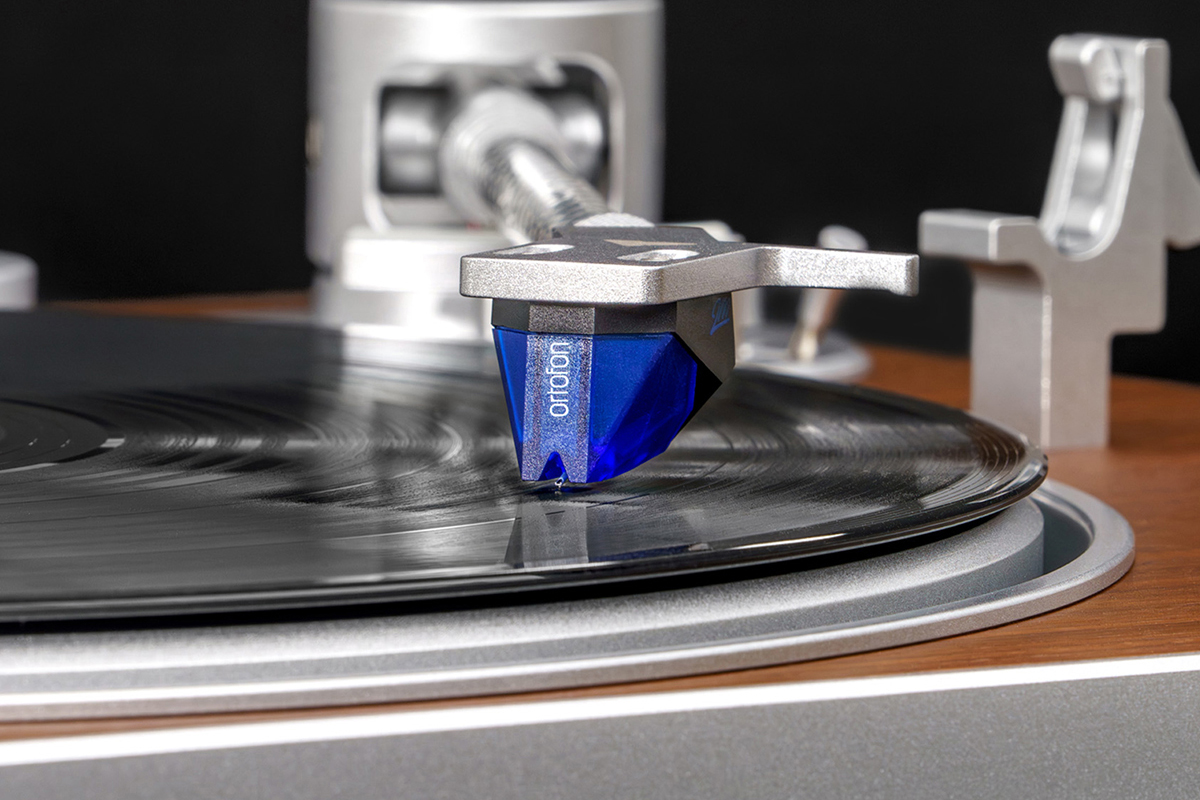
Victrola Stream Sapphire Streaming Turntable and Ortofon 2M Blue Cartridge
- Written by: Gordon Brockhouse
“This sure looks interesting,” I thought to myself when I saw the announcement of the Victrola Stream Sapphire turntable during the 2024 Consumer Electronics Show last January. It might strike some readers as weird to see a Victrola turntable reviewed on an audiophile website. The legendary brand, now owned by Innovative Technology Electronics LLC in Denver, CO, is better known for novelty audio products like suitcase record players and countertop jukeboxes than it is for serious hi-fi components.
Read more: Victrola Stream Sapphire Streaming Turntable and Ortofon 2M Blue Cartridge
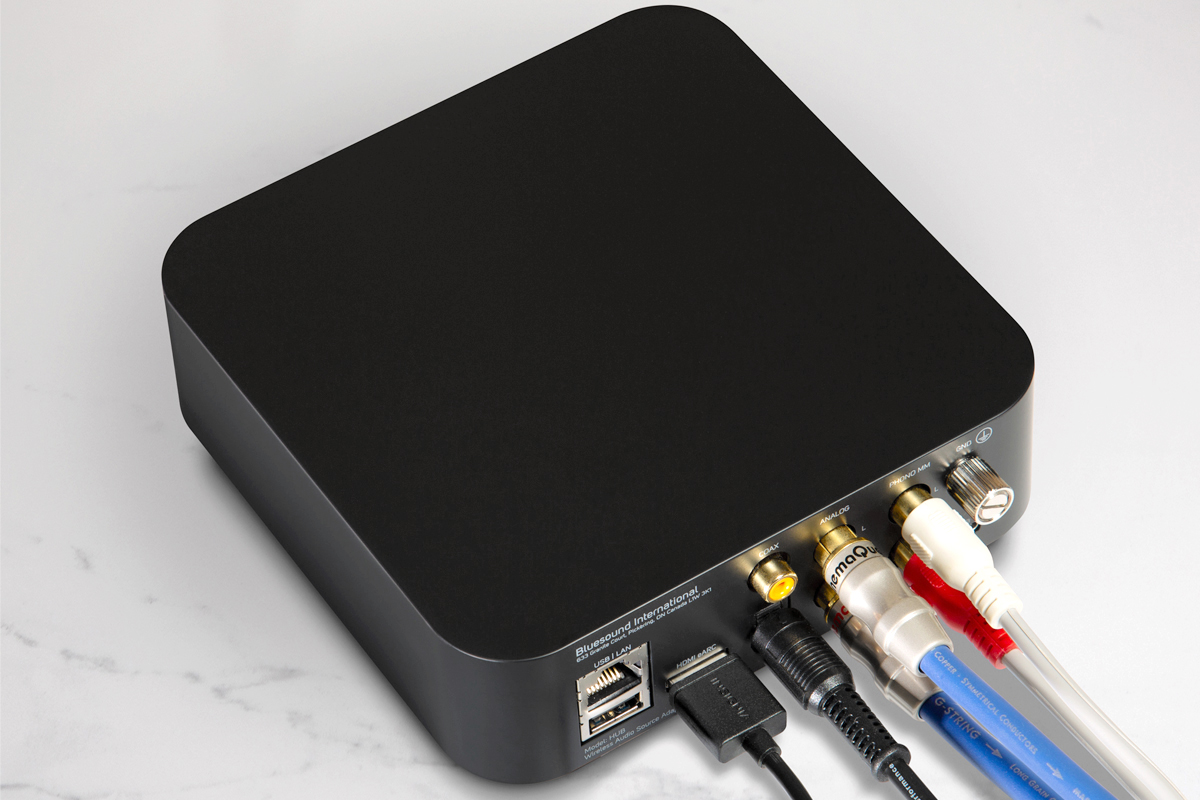
Mixed Media
- Written by: Gordon Brockhouse
I consider it fortuitous that my semi-retirement coincided with the emergence of streaming as the dominant mode of music distribution. As I wrote in my kick-off feature for Simplifi, my missus and I downsized in early 2018 in preparation for our retirements. Our previous home had a dedicated listening room in a third-floor loft. In our new home, the hi-fi has to live in the living room. That multipurpose space can’t accommodate a conventional component system—hence my use of active speakers, where the amplifiers and other electronics are built into the speaker enclosures.

Technics SC-CX700 Streaming Active Speaker System
- Written by: Gordon Brockhouse
As regular visitors to this website likely know, I embraced Simplifi’d hi-fi out of necessity rather than choice. In the small 1920s rowhouse my missus and I have called home since early 2018, our hi-fi system lives in the living room. There’s no other space that can serve as a listening room. For that reason, a conventional component system with passive speakers, amplifier, and source components won’t work for us, because such a system would clutter up a multipurpose space that we use for entertaining and hanging out.
Read more: Technics SC-CX700 Streaming Active Speaker System

Eversolo Audio DMP-A8 Streaming Preamplifier
- Written by: Roger Kanno
Note: for the full suite of measurements from the SoundStage! Audio-Electronics Lab, click this link.
 I hadn’t heard much about Eversolo before receiving the DMP-A8 for review. I saw some online chatter around the time this product was released and some early reviews, but I knew very little about Eversolo except that it was the relatively new audio brand of Zidoo, which has been producing high-quality video media streamers for several years.
I hadn’t heard much about Eversolo before receiving the DMP-A8 for review. I saw some online chatter around the time this product was released and some early reviews, but I knew very little about Eversolo except that it was the relatively new audio brand of Zidoo, which has been producing high-quality video media streamers for several years.
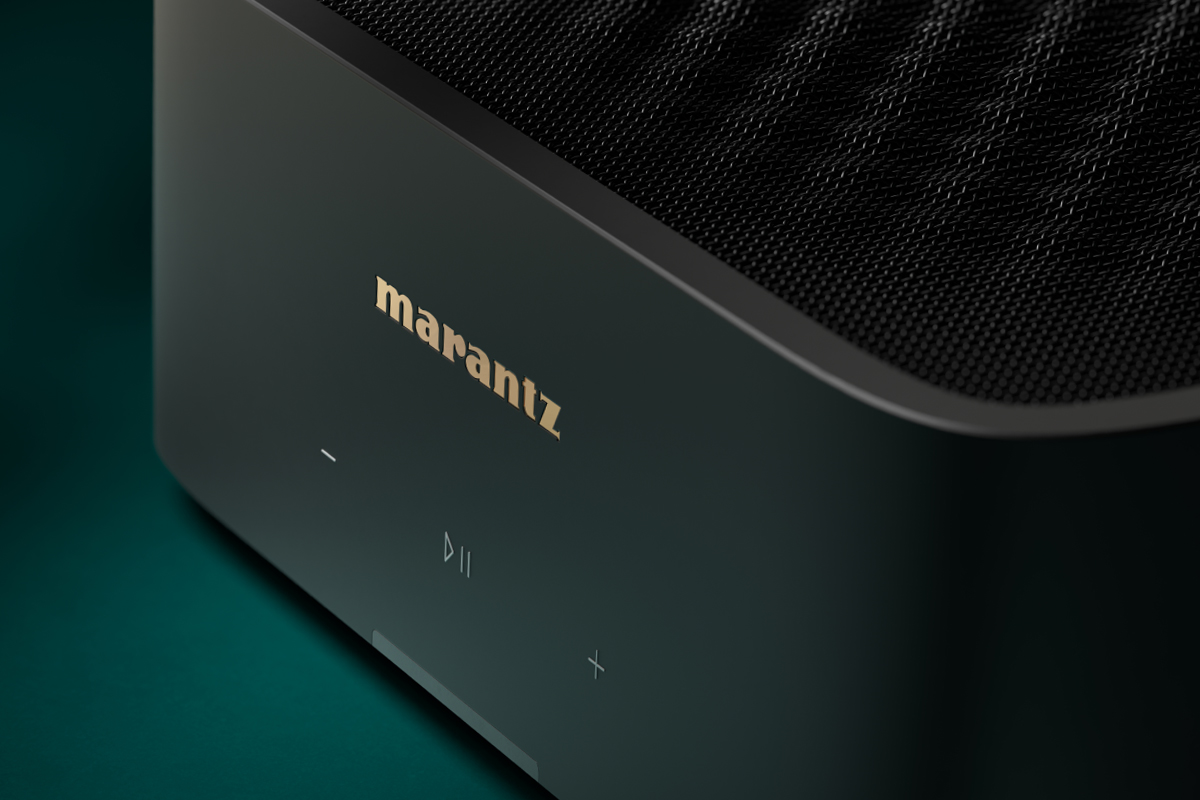
Marantz Model M1 Streaming Integrated Amplifier
- Written by: Dennis Burger
Close your eyes for a second and envision the Platonic ideal of a streaming amplifier. Then open them again and keep reading. You probably pictured something along the lines of the NAD C 700, right? Or maybe the Cambridge Audio CXN100? Or the SVS Prime Wireless Pro SoundBase? In other words, a black box with either a touchscreen or at least a digital display.
- Getting Physical
- Bluesound Node Nano Streamer
- Getting Spaced: What’s the Future for Atmos-Encoded Music?
- Naim Audio Uniti Nova PE Streaming Integrated Amplifier
- Triangle Capella Active Loudspeaker System
- Q Acoustics M40 HD Powered Loudspeaker System
- Little Colored Lights: Drilling Down in Roon
- Arcam Radia ST5 Streamer
- The French Connection—Is Audirvana a Worthy Alternative to Roon?
- Roon Labs Nucleus One Music Server
- Rotel RAS-5000 Streaming Integrated Amplifier
- Apple’s War on Windows
- Fire Sales
- Marantz CD 50n Streaming CD Player
- KEF LSX II LT Streaming Active Speaker System
- Direct versus Retail
- Bluesound Pulse M Streaming Tabletop Music System
- Buchardt Audio Anniversary 10 Active Loudspeaker and Platin Stereo Hub WiSA Transmitter
- Bang & Olufsen Beosound Balance Active Loudspeaker
- Kanto Audio ORA Reference Active Speaker System
- Harman International Has Bought Roon Labs—What Comes Next?
- Getting Physical—Do LPs and CDs Have a Place in Simplifi’d Hi-Fi?
- Elipson Prestige Facet 6B BT Powered Loudspeaker System
- Active Voices: Livio Cucuzza of Sonus Faber
- Bluesound Node X Streaming DAC-preamplifier
- System Audio Silverback 1 Active On-Wall Speaker System and Stereo Hub
- Volumio Integro Streaming Integrated Amplifier
- Pro-Ject Audio Systems T2 W Wi-Fi Turntable with Sumiko Rainier Cartridge
- Is Roon Worth It?
- Klipsch The Nines Active Loudspeaker System
- Out and About—Using Roon Away from Home
- Bluesound Powernode Edge Streaming Integrated Amplifier
- Cambridge Audio Alva TT V2 Turntable
- Lakeside Streaming—Network Entertainment at a Vacation Home
- NAD CS1 Network Music Player
- Rotel S14 Streaming Integrated Amplifier
- Streaming Update—Spring 2023
- Triangle Borea BR03 BT Powered Loudspeaker System
- iFi Audio Neo Stream Streaming DAC-Preamplifier
- Active Voices: An Interview with Paul Barton and Rob Nicholls of PSB Speakers
- PSB Alpha iQ Streaming Active Loudspeaker System
- Elac Debut ConneX DCB41 Powered Loudspeaker System
- The State of Streaming—2023
- Bowers & Wilkins Panorama 3 Soundbar
- Gordon's System, Re-Simplifi'd
- JBL 4305P Active Loudspeaker System
- Mix Master: PMC's Heff Moraes on Making Music in Atmos
- Dynaudio Focus 30 Active Loudspeaker System
- Toronto Audiofest 2022, Simplifi’d
- SVS Prime Wireless Pro Active Loudspeaker System
- Totem Acoustic Kin Play Tower Powered Loudspeaker System
- System Audio Legend 7.2 Silverback Active On-Wall Speaker and Stereo Hub
- Roksan Attessa Streaming Integrated Amplifier
- JBL L75ms Integrated Music System
- The Great Debate: Is Component Hi-Fi Dead?
- KEF LS60 Wireless Active Speaker System
- Evolving Hi-Fi: My Journey with a Fleet of Devialet Silver Phantoms
- Zidoo Neo S 4K UHD Media Player
- Simplifi'd Hi-Fi at Munich High End–and Elsewhere
- Q Acoustics M20 HD Powered Wireless Music System
- How We Listen
- Sonus Faber Omnia Wireless Music System
- Wayback Playback
- Bowers & Wilkins Zeppelin Wireless Speaker
- NAD Masters M10 V2 Streaming Integrated Amplifier
- Listen While You Work
- Mission LX Connect Wireless Active Speakers and Hub
- The State of Streaming—2022
- Linn Series 3 Active Loudspeakers
- Bang & Olufsen Beolab 28 Active Loudspeakers
- Why "Simplifi"—Five Years Later
- KEF KC62 Powered Subwoofer
- The Evolution of BluOS: An Interview with Lenbrook's Andrew Haines
- NAD C 700 Streaming Integrated Amplifier
- iFi Audio Zen Stream Wi-Fi Streamer
- Dolby Atmos Music in Your Home
- System Audio Legend 40.2 Silverback Active Loudspeakers and Stereo Hub WiSA Transmitter
- The Big Switch
- Bluesound Node Streaming DAC-Preamplifier
- I'm Only in It for the Money
- Acoustic Energy AE1 Active Loudspeakers
- Q Acoustics Q Active 200 Active Loudspeakers
- Encore! Encore! An Interview with Patricia Barber, Jim Anderson, and Ulrike Schwarz
- Bluesound Powernode Multiroom Streaming Integrated Amplifier
- Edifier Airpulse A300Pro Active Loudspeakers
- KEF LS50 Wireless II Active Loudspeakers
- The New Apple Music
- Bryston BR-20 Streaming Preamplifier-DAC
- HEDD Type 05 MK2 Active Speakers and Bass 08 Subwoofer
- Moving Forward with Formation: An Interview with Andy Kerr of Bowers & Wilkins
- Glory Days
- SVS 3000 Micro Subwoofer
- Sony SA-Z1 Active Nearfield Loudspeakers
- Heavenly Soundworks FIVE17 Active Loudspeakers
- Spotify Goes Lossless
- In Defense of Streaming
- Marantz SACD 30n SACD/CD Player and Streaming DAC-Preamp
- DALI Oberon 1 C Active Loudspeakers and Sound Hub Wireless Transmitter
- PSB Alpha AM3 Powered Loudspeakers
- Tinkering Simplifi'd
- iFi Audio Neo iDSD DAC-Preamp-Headphone Amplifier
- Bluesound Pulse Sub+ Wireless Subwoofer
- Simplifi Defined
- Going Deep with Artison
- PSB Alpha AM5 Powered Loudspeakers
- A Simplifi Yearbook
- SVS Prime Wireless SoundBase Streaming Integrated Amplifier
- Focal Solo6 Be Active Loudspeakers
- A Perfect Pair
- Buchardt Audio A500 Active Loudspeakers and Stereo Hub WiSA Transmitter
- Klipsch The Fives Active Loudspeakers
- The Critical Component
- Has the Time Come for Surround Music?
- Triangle Elara LN01A Powered Loudspeakers
- Volumio Primo Community Edition and Hi-Fi Edition Streaming DACs
- System Audio Legend 5 Silverback Active Loudspeakers and Stereo Hub WiSA Transmitter
- My Top Ten Products of the Last Two Years
- Andover Audio Model-One Turntable Music System
- Elac Alchemy DDP-2 Streaming DAC-Preamp
- Turning Pro
- Focal Shape 65 Analog Active Loudspeakers
- All About That Bass
- HEDD Type 07 Analog Active Loudspeakers
- exaSound Audio Design Delta Music Server M100
- Bryston BDA-3.14 Streaming DAC-Preamplifier
- Gently Down the Stream
- Big Events
- iFi Audio Pro iDSD Streaming DAC-Preamp-Headphone Amplifier
- Sennheiser Ambeo Soundbar
- DALI Rubicon 6 C Hybrid Active Loudspeakers
- Rules of the Game
- Pro-Ject Audio Systems Pre Box RS2 Digital DAC-Preamp-Headphone Amp
- Klipsch RW-51M Wireless Powered Loudspeakers
- The Name Game
- iFi Audio Aurora Wireless Music System
- Naim Audio Mu-so Qb 2nd Generation Wireless Music System
- January 1, 2020: The State of Streaming
- Cambridge Audio CXA81 Integrated Amplifier-DAC
- Warsaw’s Audio Video Show 2019, Simplifi’d
- Hegel Music Systems H120 Integrated Amplifier-DAC
- DALI Katch One Soundbar
- NAD Classic C 658 BluOS Streaming DAC
- Toronto Audiofest 2019, Simplifi'd
- Kanto Audio Tuk Powered Loudspeakers
- Hi-Rez à-Go-Go
- Lumin T2 Network Music Player
- Naim Audio ND5 XS 2 Network Music Player
- Elac Navis ARF-51 Active Loudspeakers
- Streaming the Classics
- Devialet Phantom Reactor 900 Active Loudspeakers
- Play Nice Together -- An Interview with Rob Darling of Roon Labs
- PMC result6 Active Loudspeakers
- Bowers & Wilkins Formation Duo Active Loudspeakers
- Active Voices, Part Three: KEF's Jack Oclee-Brown
- Naim Audio Mu-so 2nd Generation Wireless Music System
- McIntosh Laboratory MTI100 Integrated Turntable
- High End 2019, Simplifi'd
- Yamaha WXA-50 MusicCast Streaming Amplifier
- NAD Masters M10 BluOS Streaming Integrated Amplifier
- Active Voices, Part Two: Axiom Audio's Andrew Welker
- Primare SC15 Prisma Streaming DAC-Preamp
- Montréal Audio Fest Simplifi'd
- Naim Uniti Core CD Ripper/Music Server
- Elac Navis ARB-51 Active Loudspeakers
- Active Voices, Part One: Elac's Andrew Jones
- Bluesound Pulse 2i Wireless Speaker
- SVS Prime Wireless Active Speakers
- Let's Keep it Simple
- Totem Acoustic Kin Play Powered Speakers
- A Roon of One's Own
- KEF LSX Active Loudspeakers
- Bluesound Vault 2i CD Ripper-Server-Streamer
- Pro-Ject Audio Systems Stream Box S2 Ultra Music Streamer
- How I Simplifi'd My Wi-Fi
- Kii Audio Three DSP-Controlled Active Loudspeakers
- Aurender S5W Battery-Powered Wireless Active Loudspeakers
- Are Downloads Dead?
- Cambridge Audio Yoyo (L) Wireless Speaker
- Hi-Rez Streaming: Tidal vs. Qobuz
- DALI Callisto 2 C Active Speaker System
- Toronto Audiofest 2018 Simplifi'd
- Kanto SYD Bluetooth Speaker
- LG G7 ThinQ Smartphone
- How I Simplifi'd My Hi-Fi
- Pro-Ject Audio Systems Juke Box E Turntable-Integrated Amplifier
- Time to Celebrate: Five Years of Google Chromecast
- NAD D 3020 V2 Bluetooth Integrated Amplifier-DAC
- How Good Can Voice Recognition Get?
- Polk Assist Wi-Fi Smart Speaker
- Are Smart Speakers Any Good for Audiophiles?
- MartinLogan Unison Wireless Preamplifier
- High End 2018, Simplifi'd
- Dynaudio Music 7 Wi-Fi Speaker
- Musical Fidelity M6 Encore 225 Music System
- Cocktail Audio X35 Music System
- Is the Smart Speaker a Dumb Idea?
- Peachtree Audio decco125 Sky Integrated Amplifier-DAC
- Technics Ottava f SC-C70 Music System
- What's Up with Apple AirPlay 2?
- JBL Link 500 Wi-Fi Speaker
- The Spotify Dilemma
- Trinnov Amethyst DAC-Preamplifier-Processor
- Control4 Triad One Streaming Amplifier
- Elac Discovery Z3 Wi-Fi Speaker
- CES 2018, Simplifi’d
- Klipsch Heritage Wireless Three Wi-Fi Speaker
- Farewell, CES
- Paradigm PW 300 Wi-Fi Loudspeakers
- Thiel Audio Aurora Home Wi-Fi Speaker
- Room Tunes
- Hegel Music Systems H190 DAC-Integrated Amplifier
- Social Streaming
- Yamaha R-N803 Network Stereo Receiver
- Onkyo TX-8270 Network Stereo Receiver
- CEDIA 2017, Simplifi’d
- Dynaudio Focus 20 XD Active Loudspeakers
- Riva Audio Festival Wi-Fi Speaker
- Naim Audio Uniti Atom Wireless Streaming DAC-Integrated Amplifier
- Classical Prime Time
- NAD Masters Series M50.2 Digital Music Player
- Bryston BryFi BW-1 Wi-Fi Speaker
- The Röst Reconsidered
- Arcam rPlay Music Streamer
- Auralic Polaris Wireless Streaming DAC-Integrated Amplifier
- High End 2017, Simplifi'd
- Simaudio Moon Neo ACE DAC-Streamer-Integrated Amplifier
- Vinyl: There's an App for That
- Metadata: Life with Roon
- NAD C 368 DAC-Integrated Amplifier
- The Internet and Audio: The Good, the Bad, and the Impossible
- Lumin M1 Integrated Amplifier-Network Music Player
- Arcam Solo Music DAC-Integrated Amplifier-Universal Player
- McIntosh Laboratory RS100 Wi-Fi Loudspeakers
- The State of Streaming
- Hegel Music Systems Röst Integrated Amplifier
- CES 2017, Simplifi'd
- Naim Audio Mu-so Qb Wi-Fi Speaker
- Why "Simplifi"
- Bang & Olufsen BeoSound 2 Wi-Fi Speaker
Page 1 of 9
SoundStage! Simplifi is part of
All contents available on this website are copyrighted by SoundStage!® and Schneider Publishing Inc., unless otherwise noted. All rights reserved.
This site was designed by RocketTheme, Karen Fanas, and The SoundStage! Network.
To contact us, please e-mail info@soundstagenetwork.com



